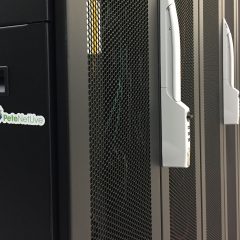Ubuntu – Joining / Logging into Windows Domains
KB ID 0000384 Problem You have a Linux client machine, and you want to authenticate to, and log into a Windows domain. I don’t have too much history with Linux, but from what I’ve read this used to be a nightmare. Using Ubuntu (10.10) I did have a couple of hiccups, but I did get there in the end. Note: The domain controller is a Windows 2008 R2 Server. Solution Notes 1. The commands needed to install the...
Brocade 300 SAN Switch – Setup and Configure
KB ID 0000593 Problem I got a warning from a colleague that these switches, were no longer ‘Open’. i.e. You can no longer just plug them in, connect all your SAN devices and it will work. That’s how they used to work, so someone has decided to have then ‘Not Work’ out of the box (Nice one, well done). Solution Rack fitting the Brocade 300 SAN Switch 1. Each mounting rail is in three pieces (2 long pieces...

